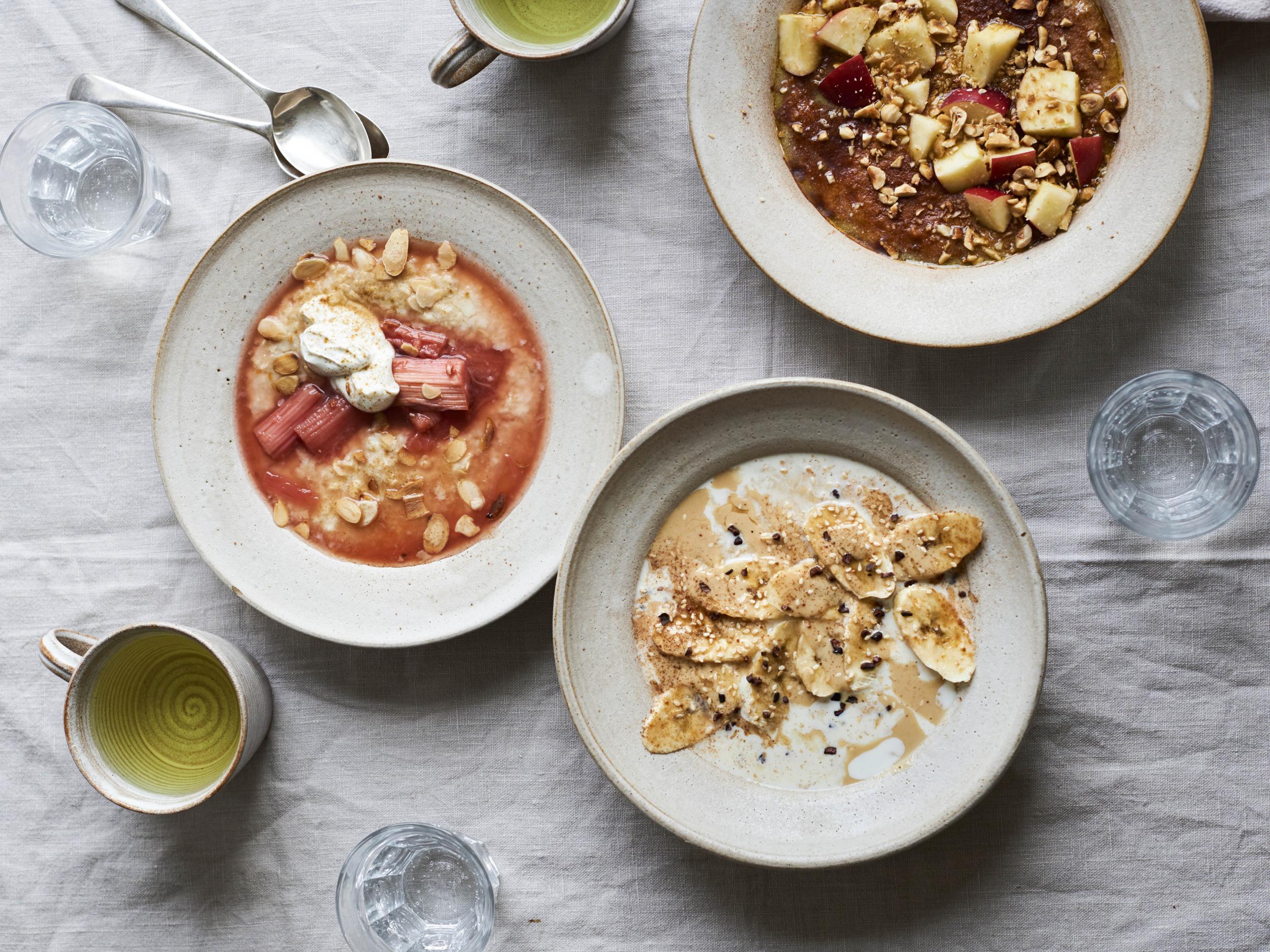The oat revolution: Coming soon to a fine-dining table near you
It’s a grain that’s loaded with potential for both nutrition and sustainability. But, Clare Finney finds, the humble oat is vulnerable to mismanagement

Your support helps us to tell the story
From reproductive rights to climate change to Big Tech, The Independent is on the ground when the story is developing. Whether it's investigating the financials of Elon Musk's pro-Trump PAC or producing our latest documentary, 'The A Word', which shines a light on the American women fighting for reproductive rights, we know how important it is to parse out the facts from the messaging.
At such a critical moment in US history, we need reporters on the ground. Your donation allows us to keep sending journalists to speak to both sides of the story.
The Independent is trusted by Americans across the entire political spectrum. And unlike many other quality news outlets, we choose not to lock Americans out of our reporting and analysis with paywalls. We believe quality journalism should be available to everyone, paid for by those who can afford it.
Your support makes all the difference.Revelatory. That is how Anna Higham describes the oats she sources for the pastry, breads and dessert she bakes in Flor, Borough Market, and in its Michelin starred older brother Lyle’s. I pause for the punchline – but Higham isn’t joking.
A pastry chef who spends her working life elbow-deep in grain, in Higham’s native Scotland, porridge is not dull, humble or virtuous but quite simply par for the course.
Oats can be revelatory; her oats from Pimhill Farm, Shrewsbury boast a “buttery, toasty deliciousness” that renders them an ideal stage, support act and main event for a host of different dishes.
And with their extraordinary nutritional properties and almost unrivalled ability to grow in some of the most inhospitable parts of Britain, the key to future-proofing the country’s food supply could well lie in us growing, cooking and consuming more oats.
Of course, not all oats are equal, and to his exhortation for us to grow and eat more, Tim Lang, professor of food policy at City, University of London, adds an important proviso: “They are a very good thing if they are grown in a way that is friendly to the ecosystem, and if consumers eat them without lots of sugar added.”
Oats are a unique grain in that they have this soluble fibrem beta-glucane, which makes them super-creamy
Oats are not such a good thing grown with pesticides and chemical fertilisers, and routinely consumed as a flapjack. Sustainability is a complex beast, ridden with caveats and variables. Oats can be as damaging as any other monocrop when grown in an intensive way, with scant regard for resources. That said, grown and eaten as they would have been before the days American maize and cornflakes changed the British breakfast market (Kellogg’s arrived in 1922), the case for oats’ sustainability is fairly straightforward.
“You can grow them at high altitudes and they are a good break crop,” says Lang – that is a crop that can be grown as part of a crop rotation, to replenish the soil between harvest and reseeding. “When you harvest the oats, leave stubble on the field, then plough it to reseed, it fertilises the whole ecosystem,” says restaurateur and Michelin starred chef Tom Kitchin, who serves porridge every morning to his staff.
These are compelling reasons for oats to turn up on fine-dining tables – yet while chefs are ever-more mindful of sustainability issues, there’s more to oats than their green credentials. What triggered Higham’s revelations were the flavour and texture of Pimhill’s product, which she has used in everything from porridge sourdough to – last year, in Lyle’s – a dessert of prunes, honey and a delicate oat mousse.
“Oats are a unique grain in that they have this soluble fibrem beta-glucane, which makes them super-creamy,” says Alex Hely-Hutchinson, whose restaurants 26 Grains and Stoney Street have heritage grains at the heart of their offering.

There is porridge, but there are also pastries, bread, stews and puddings with oats. “They have a sweetness, but they also work well with salt – hence oatcakes and herring oats in Scotland,” she continues.
Then there’s the various forms in which you can get oats: the familiar flakes, the whole grain before it’s been flattened (groats) and the pinhead oats, which are the wholegrain oats chopped up.
“If you say oats to someone, they assume porridge oats – but pinhead and groats have a lot more texture,” Higham says. In fact, she uses groats to produce her porridge bread: “It releases more on sugary starch when cooked as porridge, which gives the bread a beautiful sticky texture.”
Oats are an ingredient of extraordinary potential; but their being coopted by the snacking industry’s sugar means we have also lost sight of their ordinariness
Meanwhile, at the Michelin starred Forest Side in Grasmere, Cumbria, chef Paul Leonard uses them to create puffed oat crisps, served with truffles, cheese and a celeriac broth as a pre-dinner snack. The entrenched association between oats and breakfast porridge is not surprising – nor is it unhelpful. As Lang stresses, they were “the cornerstone of British breakfasts, and modern nutrition thinking points towards the need to return to them.” But it has – up until recently – tended to obfuscate their potential beyond porridge, with the result that we’re importing or growing cereal to serve a purpose that oats could easily fill at a lower environmental and nutritional cost.
“In pursuit of texture in my kitchen, oats represent a readily available and sustainable ingredient,” says chef Alex Claridge, who at The Wilderness in Birmingham uses oatmeal as “a native alternative to rice”, forming a biryani crumb on Indian spiced monkfish livers.
“If you think of them like another grain, as you would buckwheat or barley, you can see all sorts of uses,” says Hely-Hutchinson, who sees pinhead oatmeal in the same way as we might freekeh or risotto rice. Like Forest Side, Flor, and Tom Kitchin, 26 Grains sources its oats from British stoneground mills whose suppliers grow their oats organically – or at least according to organic principles, in a concerted effort to encourage more sustainable forms of agriculture.

“We want to support the small individual oat mills. It is vitally important,” stresses Kitchin who, like Higham, grew up on oats and has no intention of casting them aside now he’s a Michelin starred chef: if anything, it’s all the more reason to “celebrate the humble ingredients, and mix the humble foods with those which are fancier”.
It’s more creative for Kitchin and his team, and more supportive of the land and local producers. At the same time, his decision (and that of Leonard at Forest Side) to provide porridge for their employees ensures they are simply fed well. I feel Professor Lang would approve of this model.
Oats are an ingredient of extraordinary potential; but their being coopted by the snacking industry’s sugar (and packaging) and heavy, on-the-go pots and bars means we have also lost sight of their ordinariness.
Kitchin’s partridges stuffed with oats, orange and juniper might be something to aim for – but Kitchin’s porridge is where we should start. As Lang says: “If you start the day with a bowl of porridge, you’re not hungry and tempted to graze on sugary snacks later.”
Join our commenting forum
Join thought-provoking conversations, follow other Independent readers and see their replies
Comments